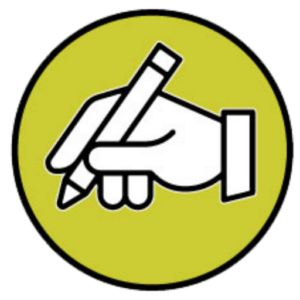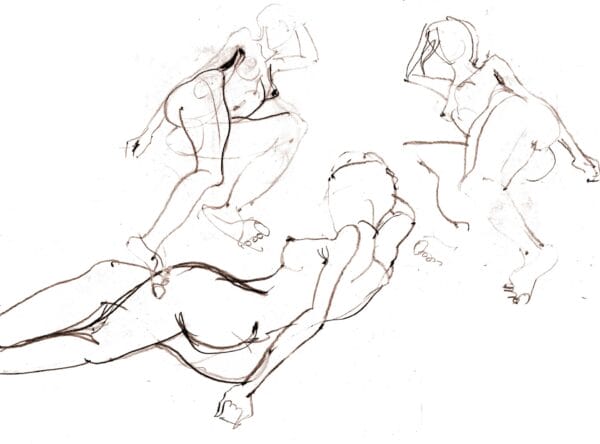Struggling to draw a realistic human figure? Beginner at understanding anatomy? Drawing anatomy can help you bring life to your artwork! Learn the fundamentals of the human form. Use this knowledge to create stunning illustrations. Uncover the secrets of how to draw human anatomy! This guide will help you!
The Human Anatomy – A Complex Composition!
The human body is composed of various components. These include the skeleton, musculoskeletal system, integumentary system, respiratory system, digestive system, urinary system, endocrine system, nervous system, lymphatic system, and cardiovascular system.
The skeleton provides the frame for the body, while muscles enable movement. The integumentary system, which includes skin, hair, and nails, protects the body from external elements. Meanwhile, the respiratory system allows for oxygen intake and carbon dioxide release through breathing.
The digestive system enables digestion and nutrient absorption. The urinary system gets rid of waste products through urine excretion. The endocrine system regulates hormones to maintain homeostasis. The nervous system communicates messages between body parts with the brain, spinal cord, and nerves.
The lymphatic system helps fight infections by producing white blood cells. Lastly, the cardiovascular system circulates blood and oxygen throughout the body.
In anatomical studies, artists delve into the complexities of the human body using various drawing techniques. Maintaining equilibrium within the body’s structures requires a nuanced understanding, much like mastering shading techniques and artistic styles. Through sketching from live models or photographic arrays, artists enhance their understanding and skills, fostering their artistic development.
The Body and Balance
The human form and balance in drawing are closely connected. To understand how the body stays balanced when depicted, let’s look at negative space, gestures, edges, and shapes. These all help to achieve balance in a drawing.
Below, we show how these elements affect balance:
| Elements | Description |
|---|---|
| Negative Space | Organic and geometric forms represent body parts with different sizes. |
| Gesture | Movement or flow of figure, showing its main features and energy. |
| Edges | Where two shapes meet, showing what divides the body. |
| Shapes | Organic and geometric forms represent body parts of different sizes. |
Knowing these helps an artist draw balanced poses. They can use negative space to bring harmony between the subject and its surroundings. Mastering gestures helps capture movement while keeping balance. Edges show body part differences and help with stability. And shapes help with accurate proportions.
To learn more about balance in drawing the human form:
- Look at photos or models – See how weight affects balance from different angles.
- Do quick gesture drawings – Use loose strokes to show movements in little time.
- Try out negative space – Place the subject and its surroundings together for balance.
- Outline before details – Focus on shapes to get the right proportions.
By doing this, you’ll understand better how balance affects the human form in drawings. Finally, figure drawing classes are where you go to try to make a human-looking figure, but usually end up with ‘stick figures on steroids’!
Figure Drawing Classes
Learn figure drawing with these topics:
- Drawing the Skeleton: Understand skeletal proportions and joint movements.
- Drawing the Head: Capture realistic facial expressions and details.
- Drawing the Rib Cage: Accurately depict the shape and placement of the rib cage.
- Drawing the Pelvis: Master the pelvis’s structure and how it affects balance in a drawing.
- Drawing Hands: Capture details and gestures of hands.
- Drawing Feet: Learn proportions, bone structure, and weight distribution of feet.
Plus, observe live models, explore mediums, understand lighting and shading. To improve your figure drawing skills:
- Do gesture drawing to capture poses and movement.
- Study reference photos or anatomical models of body parts.
- Get feedback from experienced artists.
- Analyze masterpieces by great artists.
By applying these techniques, you can draw figures with accuracy and artistry!
Frequently Asked Questions
1. What is drawing anatomy?
Drawing anatomy refers to the study and practice of representing the structure and form of the human body in visual art. It involves understanding and accurately depicting the bones, muscles, and proportions of different body parts.
2. Why is understanding human anatomy important for drawing?
Understanding human anatomy is crucial for drawing because it helps artists create realistic and convincing representations of the human form. It allows them to accurately depict the body’s proportions, poses, and movements.
3. How can I improve my understanding of human anatomy for drawing?
There are several ways to improve your understanding of human anatomy for drawing. These include studying anatomy books and resources, attending life drawing classes, observing the human body in real life, and practicing drawing from anatomical references.
4. Are there any specific techniques for drawing anatomy?
Yes, there are specific techniques that can enhance your anatomy drawing skills. These include using basic geometric shapes to establish the overall structure, understanding the underlying bones and muscles, studying the body’s proportions, and practicing gesture drawing to capture the body’s movements.
5. Can I learn drawing anatomy even if I have no prior artistic experience?
Yes, it is possible to learn drawing anatomy even without prior artistic experience. Starting with basic drawing exercises and gradually progressing to more complex studies can help you develop your skills. Patience, dedication, and regular practice are essential for improvement.
6. Where can I find resources to learn more about drawing anatomy?
There are numerous resources available for learning drawing anatomy. You can find anatomy books, online tutorials, video courses, and even anatomical models to enhance your learning. Visiting art libraries, joining online art communities, and participating in workshops can also provide valuable guidance and resources.

